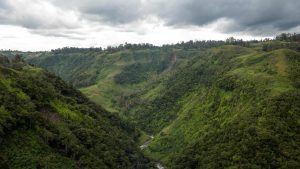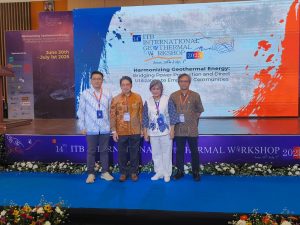
Source: BMKG Youtube Channel
Jakarta – The Meteorology, Climatology and Geophysics Agency (BMKG) stated that the impact on the rate of climate change can be seen from the extreme weather that often hits Indonesia, in a written statement, Wednesday (23/3).
Not only has the intensity increased, but also the duration “ranging from heavy rains accompanied by lightning and thunder, tropical cyclones, high waves, to hail,” said BMKG Head Dwikorita Karnawati.
She added that the impact of climate change has been felt since 2016. BMKG noted that overall, 2016 was the hottest year in Indonesia with an anomaly value of 0.8 degrees Celsius during the observation period from 1981 to 2020. In 2020 itself ranked the second hottest year with anomalous values. of 0.7 degrees Celsius, with 2019 being in third place with an anomaly value of 0.6 degrees Celsius.
In comparison, the global average temperature information released by the World Meteorological Organization (WMO) in its last report in early December 2020 also places 2016 as the hottest year (ranked first), with 2020 being on-the-track towards one of the three hottest years ever recorded.
“This condition also causes the eternal snow to melt in Puncak Jaya, Papua. If initially the perpetual snow area was about 200 sq km, now it only leaves 2 sq km or only 1 percent left. The eternal snow and ice at Puncak Jaya itself is a unique thing that Indonesia has, considering that the archipelago has a tropical climate,” she said.
Karnawati said that the 2022 World Meteorological Day (HMD), which is commemorated on March 23, is a momentum to increase the capacity for early warning and early action on weather and climate phenomena. When this situation is met with environmental vulnerability, these extreme phenomena often escalate into hydrometeorological disasters such as flash floods, hurricanes, and landslides.
“World Meteorological Day, March 23, 2022, with the theme ‘Early Warning and Early Action, Hydrometerological and Climate Information for Disaster Risk Reduction’, can be interpreted as early warnings and early actions, and highlights the importance of hydrometeorological and climate information for disaster risk reduction,” she added.
The emergence of tropical cyclone Seroja caused flash floods and landslides in East Nusa Tenggara (NTT) last April 2021, despite cyclone phenomena being very rare in tropical areas such as Indonesia. The fact is, during the last 10 years tropical cyclones have become more and more frequent.
“If this situation continues, it will be a pity for our children and grandchildren, the next generation of this nation. Indonesia will be hit by extreme weather and disasters that will not only cause material losses but also casualties,” said Karnawati. (Hartatik)













